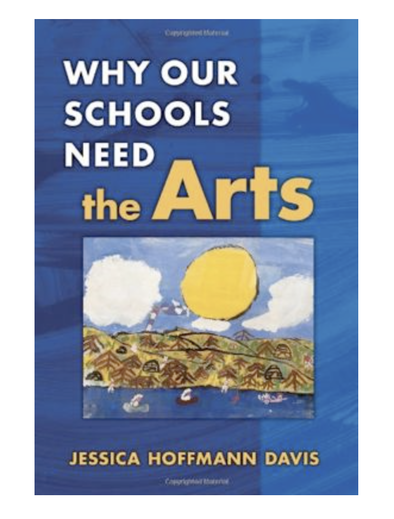An Interview with Jessica Hoffmann Davis, Part One The post is a summary about the interview with Jessica Hoffmann Davis. The arts provide essential learning that other subjects simply do not. Positive forms of arts education took place in the 1920s. Primarily, arts education has measured incalculable student outcomes such as creativity, empathy, and thoughtful citizenship. However, starting with the Cold War era of Sptnik crisis, in the late 1950s, students were ordered to become more immersed in fields such as math and science to gain an edge in international competition. This made us think of visual arts, dance, music and theater as "soft" learning. And while the terminology changed with the fashion of education, the mandate to "sell" art as the maid of the most valuable in education prevailed. We know that learning the arts brings joy to our students, helps them develop into full and capable people, and enriches their souls. But in the real job market, we want statistics, we want quantitative proof of value that cannot be measured. To recap, here are three of the five hallmarks of art and the resulting learning outcomes that I have pinpointed. 1) Type of Art - The existence of something that did not exist before the artist/student created it. From this emerge the learning outcomes of the imagination (the possibilities the student invents and/or contemplates) and the subject (the student's central role in achieving these ends). 2) With an emphasis on emotions, students learn about expression (giving their emotions a shape) and empathy (recognizing the emotions of others). 3) Ambiguity - Art intentionally conveys multiple meanings that students can learn about interpretation (to understand) and respect (to understand others). What kind of things did they share? Stories of how visual arts had given them the opportunity and courage to express their inner lives, how musical ensembles had given them a sense of community and mattering, how playing a dramatic role had enabled them to experience almost first hand the suffering of a grieving friend. Wonderful moving accounts of the safe haven that they found in the arts classroom and the difference they experienced between arts teachers who treated them like colleagues who could make their own choices and non-arts teachers whose expectations were set and constrained. The passage from childhood to adulthood is both thrilling and perilous and at this challenging time of life, these students found that arts learning helped them with the pressing agenda of self-discovery About Author: Jessica Hoffmann Davis has published and lectured extensively on the role and promise of arts learning, drawing not only on her own and other current research, but also on personal experience as a visual artist, writer, and educator. While her popular book, Why Our Schools Need the Arts (Teachers College Press, 2008), proposes a “new and unapologetic approach to advocacy for the arts in education”, I originally came to admire her work through reading (and re-reading!) Framing Education as Art: The Octopus has a Good Day (Teachers College Press, 2005), where she challenges non-arts education to be more connected to and like the arts. (by excerpt the article)
0 Comments
Leave a Reply. |
Myungja Anna KohArtist Categories
All
Archives
July 2024
|
Proudly powered by Weebly


 RSS Feed
RSS Feed